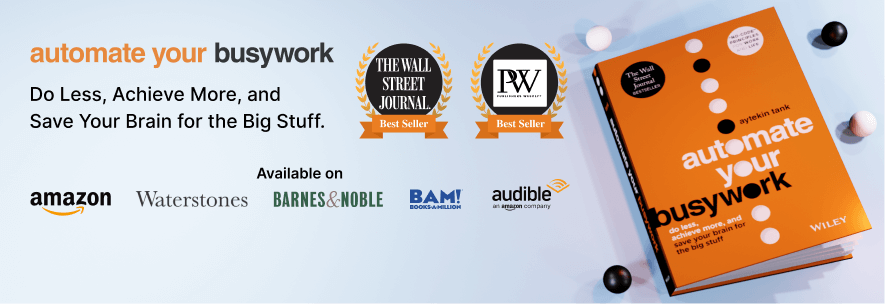In 2013, CEO of Netflix, Reed Hastings sent an 11-page memo to his employees and investors with one core message: he wanted to make a change from simply distributing content digitally to becoming a top producer of original content capable of winning Oscars and Emmys.
The contents of the memo said the following:
“We don’t and can’t compete on breadth with Comcast, Sky, Amazon, Apple, Microsoft, Sony, or Google. For us to be hugely successful we have to be a focused passion brand.”
By broadening their vision, their focus changed; a decision that ended up tripling their profits.
The trouble with slow organizational transformation
Writing for Harvard Business Review, co-authors Scott D. Anthony, Alasdair Trotter, and Evan I. Schwartz, discovered a key lesson from looking at the top 20 business transformations of the last decade. They write:
“In an era of relentless change, a company survives and thrives based not on its size or performance at any given time but on its ability to reposition itself to create a new future, and to leverage a purpose-driven mission to that end. That’s why strategic transformation may be the business leadership imperative of the 21st century.”
As we navigate the current crisis, many companies will find themselves at a crossroads. On the one hand, is the path they’ve always taken. On the other, an opportunity to change the status quo.
If you’ve followed my writing for a while now, you know that I’m a big proponent of how slow and steady — especially in the world of business — wins the race. But I want to be clear on something: taking on a moderate approach isn’t the same thing as resisting innovation.
Had Netflix decided to do business as usual back in 2013, for example, they likely wouldn’t be the #1 company they are today.
In his fascinating story for Forbes, Peter Karlson explains it well: ”Move too slow, and people get frustrated, individual growth is hindered and companies become irrelevant.”
And the trouble with slow organizational transformation is that you’re not reinventing yourself or your product.
Take one of the most iconic brands in the video rental space, Blockbuster. In 2000, Reed Hastings flew to Dallas to propose a partnership that would allow Netflix to run Blockbuster’s brand online. But as Greg Satell writes for Forbes, instead of taking it as an opportunity for Blockbuster to innovate“Hastings got laughed out of the room.”
What happened next? Instead of transitioning to a digital model, Blockbuster ended up filing for bankruptcy in 2010.
You could say that it was their inability to transform their organization that ended up costing them their business.
As a leader, I’ve often taken the above lesson to heart: stay focused on one thing and do that thing extremely well.
But don’t stop raising the bar. Instead,
Be strategic about transforming
You don’t have to overhaul your entire business to create significant change. The key is finding the right pace for your organization, and then following up with action.
Here are a few key learnings I’ve heeded over the years to stay ahead of the curve.
1. Choose purpose over medium
If you’re clear about what you want to achieve, then the how becomes irrelevant.
In the case of Blockbuster: they were so caught up with maintaining the status quo and providing their service the same way they always had, that it blinded them from innovating. They focused on the medium.
Netflix, on the other hand, focused on purpose: “Become a top producer of original content.”
I launched Jotform back in 2006 based on a singular vision that everyone should be able to create simple forms that boost their productivity, and ultimately make their lives easier.
My job as CEO since then hasn’t been about trying to compete with industry heavyweights like Google, but in ensuring we don’t lose sight of that guiding motivation.
2. Level up with new products, but first, listen
Many companies and organizations are realizing that digital transformation is inevitable. Since the beginning of this crisis and the onslaught of organizing virtual meetings, we kept receiving user feedback about making collecting information easier.
We listened.
In a few days, we’re set to release our latest tool, Jotform Smart PDF Forms, a way to convert PDFs into online forms. As we started building this new feature, we kept large enterprises and government agencies in mind. But really, we thought of anyone who is buried in PDFs for data collection right now. How can we empower PDFs? we asked ourselves. How can we make this accessible to anyone with zero developer skills?
To find these answers, we went back to our purpose: Coming up with the best way to support our customers to make this transition as smooth as possible.
The result of listening is a user-friendly tool that allows users to collect information using fillable forms, while also retaining their original layout in a fixed, PDF form.
The bottom line: the best products don’t come out of nowhere. They come from listening closely to your users and customers, and identifying problems that need to be solved.
I share this whole process with you because I want to hit home that pushing innovation means very little if you aren’t continually trying to improve people’s lives. Or as one of my favorite quotes from Bill Gates lays out:
“If we have optimism without empathy then it doesn’t matter how much we master the secrets of science. We’re not really solving problems, we’re just working on puzzles.”
3. Keep innovating and adjust as needed
All of the above leads me to this point. Innovating means listening to your customers, but it’s also about engaging your team and paying close attention to their input as well.
Transforming your organization will involve endless experimenting, making small tweaks and changes as you go, and then constantly evaluating their impact. This, according to Karlson, is what helps you find your pace and build momentum. “How hard should you push your organization? What is too fast and too slow? In the race to transform, set a steady pace that fits your business, monitor its effectiveness and adjust as needed.”
But whatever you do, keep the ball rolling, because as Hastings aptly puts it:
“Most entrepreneurial ideas will sound crazy, stupid and uneconomic, and then they’ll turn out to be right.”













Send Comment: